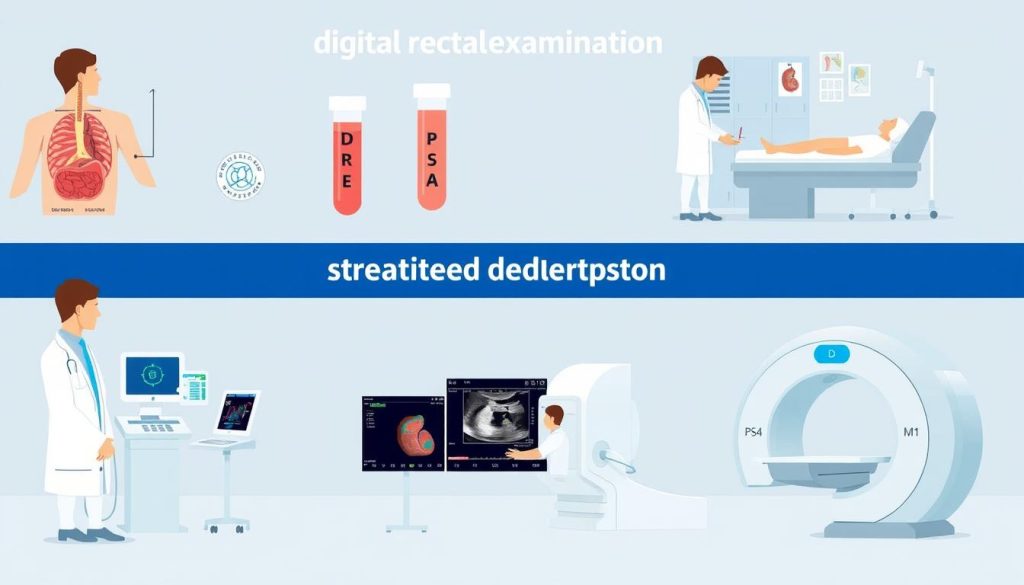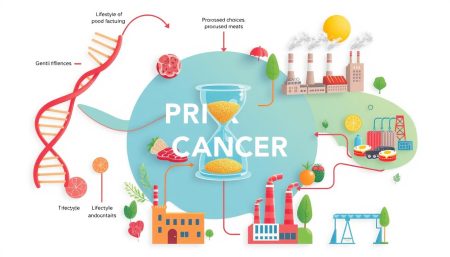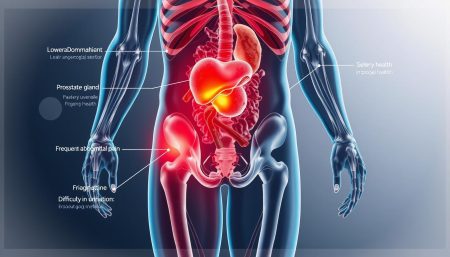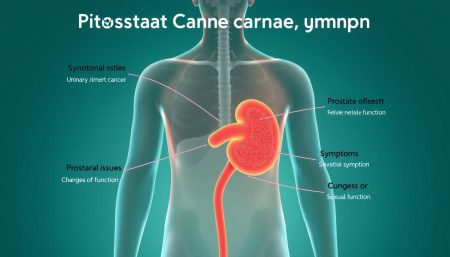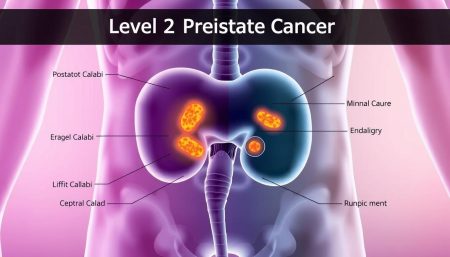Prostate cancer is a big problem for men all over the world. Finding it early is key to treating it well. This guide will look at how to find prostate cancer, from first tests to advanced methods.
Knowing the signs and risks of prostate cancer is important for acting fast. We’ll talk about symptoms, tests, and tools that spot this common cancer in men. Learning about these can help you take care of your prostate health.
From simple blood tests to advanced imaging, finding prostate cancer has gotten better. This detailed look aims to give you the info you need. It’s to help you make smart choices about your health care.
Understanding Prostate Cancer Risk Factors and Warning Signs
Prostate cancer is a serious health concern for men. Knowing the risk factors and early signs can help detect and treat it early. Let’s look at the key aspects of this disease to help you stay informed and proactive about your health.
Common Risk Factors for Prostate Cancer Development
Several factors can increase a man’s chance of getting prostate cancer:
- Age: Risk goes up after 50
- Family history: Having relatives with prostate cancer
- Race: African American men are at higher risk
- Diet: Eating a lot of red meat and dairy
- Obesity: Being overweight may raise risk
Early Warning Signs and Symptoms to Watch For
It’s important to recognize early signs. While prostate cancer often has no symptoms, watch for:
- Frequent urination, especially at night
- Weak or interrupted urine flow
- Difficulty starting urination
- Blood in urine or semen
- Unexplained pain in the pelvic area
Age-Related Risk Assessment Guidelines
Age is a big factor in prostate cancer risk. Here are some guidelines:
| Age Group | Risk Level | Recommended Action |
|---|---|---|
| Under 40 | Low | Be aware of family history |
| 40-54 | Moderate | Discuss screening with doctor |
| 55-69 | Higher | Regular screenings recommended |
| 70+ | Highest | Individualized screening plan |
Knowing about prostate cancer risk factors, early signs, and age-related risks helps you take control of your health. Regular check-ups and talking to your doctor are key steps in preventing and detecting prostate cancer early.
Initial Screening and Basic Detection Methods
Prostate screening is key for catching cancer early. Knowing the basics can make men feel more comfortable with it. It encourages them to get checked regularly.
Digital Rectal Examination (DRE) Procedure
The digital rectal exam is quick and easy. A doctor puts a gloved, lubricated finger in the rectum to feel the prostate. This check looks for any odd sizes, shapes, or textures.
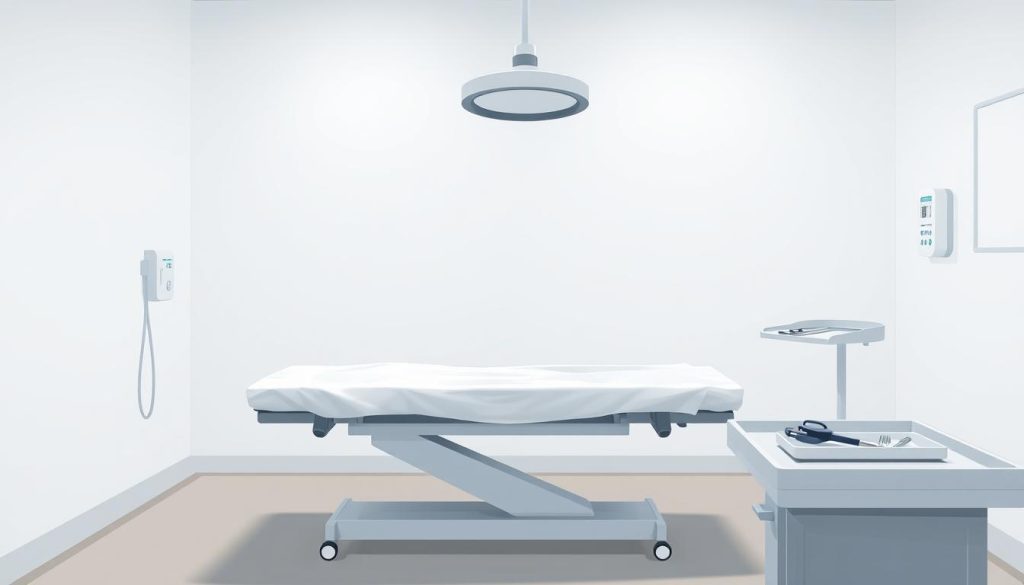
PSA Blood Test Overview and Interpretation
The PSA test checks the prostate-specific antigen in your blood. High levels might mean cancer, but can also show other issues. Blood tests are key for spotting cancer early, helping doctors find the right treatment.
| PSA Level (ng/mL) | Risk Category | Recommended Action |
|---|---|---|
| 0-2.5 | Low | Continue routine screening |
| 2.6-4.0 | Slightly Elevated | Monitor closely |
| 4.1-10.0 | Moderately Elevated | Consider biopsy |
| >10.0 | High | Biopsy recommended |
Regular Screening Recommendations by Age Group
Screening guidelines change with age and risk. Men should talk to their doctor about what’s best for them. Usually, screening starts at 50 for most men, but it’s earlier for those at higher risk.
- 40-49 years: Discuss risk factors with doctor
- 50-70 years: Annual or biennial screening
- 70+ years: Individualized approach based on health status
“Early detection through regular screening can significantly improve prostate cancer outcomes.”
How to Diagnose Prostate Cancer: Professional Medical Evaluation
When initial screening results raise concerns, a professional medical evaluation becomes crucial for prostate cancer diagnosis. This process involves a series of steps designed to provide a comprehensive assessment of your health and determine the presence of cancer.
The journey begins with a consultation with a urologist, a specialist in urinary tract and male reproductive system disorders. During this visit, the doctor will review your medical history, including family history of cancer and any symptoms you’ve experienced. This information helps guide the medical evaluation process.
A thorough physical examination follows, which may include a digital rectal exam (DRE) if not already performed. The urologist might also order additional blood tests to assess your overall health and gather more data about potential prostate issues.
If further investigation is warranted, advanced diagnostics come into play. These may include:
- Specialized blood tests for prostate-specific antigen (PSA) levels
- Imaging studies such as MRI or CT scans
- Prostate biopsy for definitive diagnosis
Throughout this process, clear communication with your healthcare team is vital. Don’t hesitate to ask questions or seek clarification about any aspect of your prostate cancer diagnosis or medical evaluation. Remember, awareness and education are crucial in navigating any health concern, including prostate cancer.
“A thorough medical evaluation is the cornerstone of accurate prostate cancer diagnosis, guiding treatment decisions and improving outcomes.”
Your healthcare provider will interpret all test results and discuss the findings with you, explaining what they mean for your health and potential next steps in your care journey.
Advanced Diagnostic Imaging Techniques
Doctors use the latest imaging methods to find prostate cancer. These methods help spot problems and guide treatment. They give a clear picture of what’s going on inside the body.
Multiparametric MRI Scanning Process
MRI scanning gives detailed views of the prostate. It combines different scans for a full image. Doctors look for signs of cancer in these images.
The process is painless and doesn’t use harmful radiation. This makes it safe for patients.
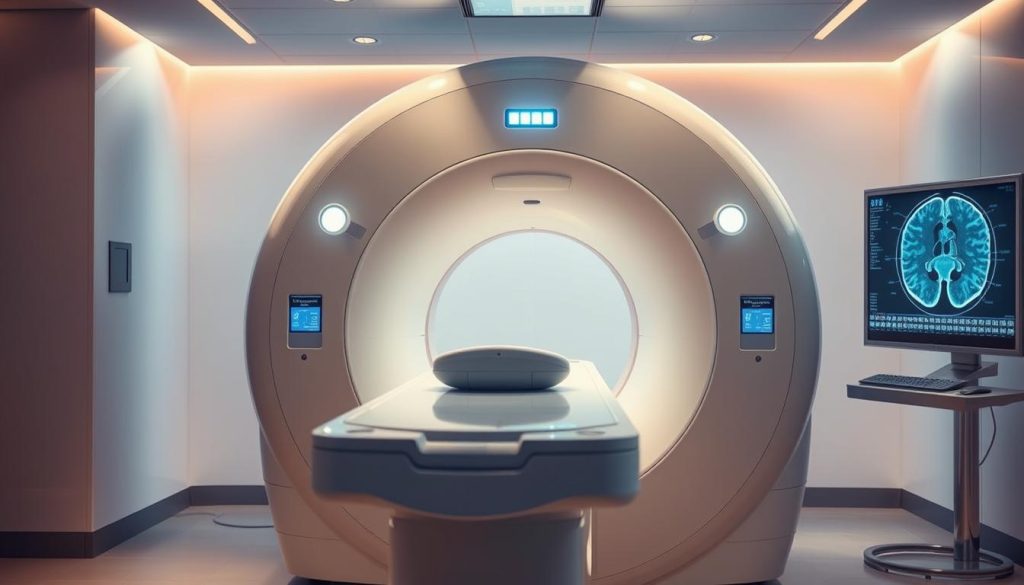
Transrectal Ultrasound Benefits and Procedure
Transrectal ultrasound uses sound waves to create images of the prostate. It’s often used to guide biopsies. The procedure is quick and shows real-time images.
Doctors can see the prostate’s size and shape. This helps them find any unusual growths.
PET Scan Applications in Prostate Cancer Detection
PET scans show how the body works at a cellular level. For prostate cancer, special tracers highlight cancer cells. This is great for finding if cancer has spread.
| Imaging Technique | Key Benefit | Duration |
|---|---|---|
| MRI Scanning | Detailed soft tissue imaging | 30-60 minutes |
| Transrectal Ultrasound | Real-time imaging for biopsy guidance | 15-30 minutes |
| PET Scan | Detects cancer spread | 2-3 hours |
Prostate Biopsy Procedures and Types
A prostate biopsy is key in finding prostate cancer. It takes tissue samples from the prostate gland. We’ll look at the different biopsies and what recovery is like.
TRUS-Guided Biopsy Method
The TRUS-guided biopsy is a common way to find prostate cancer. TRUS means transrectal ultrasound. A thin needle goes through the rectum to get tissue samples.
The ultrasound guides the needle to the right spots.
Fusion Biopsy Technology
Fusion biopsy uses MRI and ultrasound together. It targets specific areas in the prostate more accurately. This method is better for finding cancer when other biopsies don’t work.
Recovery and Post-Biopsy Care
After a biopsy, you might feel some pain and see blood. It’s okay to see blood in urine, stool, or semen for a few days. To help you get better:
- Rest for 24-48 hours
- Drink lots of water
- Avoid hard activities for a week
- Take antibiotics as told to prevent infection
If you have bad pain, fever, or a lot of bleeding, call your doctor right away. The biopsy results usually come in a few days to a week.
Laboratory Testing and Biomarker Analysis
In the fight against prostate cancer, lab tests and biomarker analysis are key. These advanced methods help doctors understand the cancer’s nature. They guide treatment choices. Biomarker analysis looks at specific molecules in blood, tissue, or fluids that show cancer.
Lab tests help in staging and grading prostate cancer. Staging shows how far the cancer has spread. Grading tells how aggressive it is. This info is crucial for picking the right treatment.
For example, a low-grade, early-stage cancer might need watchful waiting. But a more aggressive cancer might need quick treatment.
Scientists are always finding new biomarkers to improve cancer detection and treatment. These new tools aim to give more accurate diagnoses. They help tailor treatments to each patient’s cancer. As research goes on, biomarker analysis is changing prostate cancer care. It offers hope for better and more targeted treatments.
FAQ
Q: What are the early warning signs of prostate cancer?
A: Signs of prostate cancer include frequent urination, especially at night. You might also have trouble starting or stopping urination. Weak or interrupted urine flow is another sign. Blood in urine or semen and discomfort in the pelvic area are also warning signs.
But, these symptoms can also mean non-cancerous conditions. If you notice any, talk to your healthcare provider for a check-up.
Q: At what age should men start getting screened for prostate cancer?
A: Men should talk to their doctor about prostate cancer screening at:
– Age 50 for average risk
– Age 45 for high risk, like African American men or those with a family history
– Age 40 for even higher risk, with a family history of early prostate cancer
Q: What does the PSA test measure, and what are normal levels?
A: The PSA test checks for PSA in your blood. PSA is a protein from the prostate gland. There’s no set normal or abnormal level.
Generally, levels under 4 ng/mL are normal. Levels between 4 and 10 ng/mL are borderline. Levels over 10 ng/mL are high. But, PSA levels can be affected by many things. Always talk to a healthcare professional about your results.
Q: How accurate is the digital rectal exam (DRE) in detecting prostate cancer?
A: The DRE is a key screening tool, but it’s not perfect. It can find abnormalities in the prostate gland. But, it might miss some cancers and can’t tell if an abnormality is cancerous.
The DRE works best with the PSA test and other tests. Regular screenings help find cancer early.
Q: What is a prostate biopsy, and is it painful?
A: A prostate biopsy takes small tissue samples from the prostate gland. It’s usually done with a transrectal ultrasound-guided (TRUS) biopsy. The procedure might cause some discomfort, but it’s not usually very painful.
Local anesthesia is used to make it less uncomfortable. Some men might feel sore, bleed, or have trouble urinating for a few days after.
Q: How does multiparametric MRI help in diagnosing prostate cancer?
A: Multiparametric MRI (mpMRI) gives detailed images of the prostate gland. It combines different MRI techniques to:
– Find suspicious areas in the prostate
– See where and how big potential tumors are
– Guide biopsies for more accurate sampling
– Help in staging prostate cancer if it’s found
This technique can make diagnosing prostate cancer more accurate and reduce the need for unnecessary biopsies.
Q: What is the Gleason score, and how does it relate to prostate cancer diagnosis?
A: The Gleason score rates prostate cancer’s aggressiveness. It’s based on how the cancer cells look under a microscope. The score ranges from 6 to 10.
Lower scores mean lower-grade cancer. Higher scores mean higher-grade cancer. The Gleason score helps doctors choose the best treatment and predict the disease’s outcome.
Q: Can lifestyle changes reduce the risk of prostate cancer?
A: Some risk factors for prostate cancer, like age and family history, can’t be changed. But, certain lifestyle changes might help reduce risk.
Eat a healthy diet, exercise regularly, and maintain a healthy weight. Quit smoking and limit alcohol. Discuss the benefits of supplements like vitamin D or selenium with your doctor.
These changes can improve your overall health and may lower the risk of prostate cancer and other diseases.












